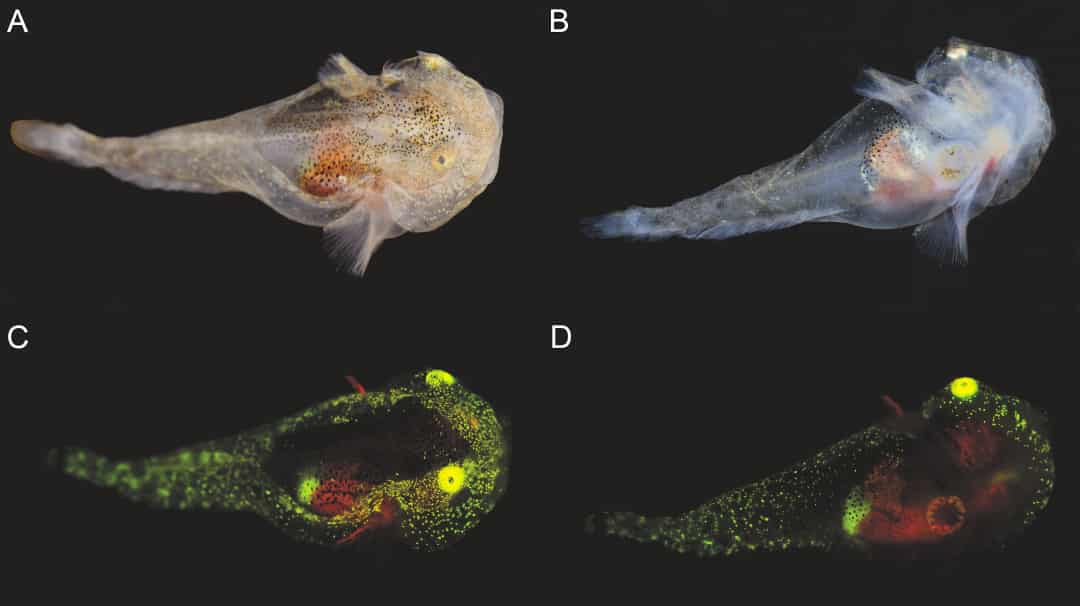
Researchers are constantly finding new, previously unknown things in the Arctic Ocean, be it animal species, behaviour or physiological processes. But what two US scientists have discovered in a fish species that was previously considered rather unspectacular is probably a unique find: A fish that on the one hand biofluoresces through light and on the other hand glows not only in one color, but in two colors.
The two fish researchers John Sparks and David Gruber of the American Museum of Natural History discovered these extraordinary abilities in juvenile fish of the genus Liparis gibbus, which belongs to the group of snailfish. “We were surprised to find these juvenile snailfish brightly fluorescing in not just one, but two different colors, which is very unusual in a single species,” explains John Sparks. According to the two experts, the very fact that the fish fluoresce is remarkable, as this ability is hardly known in Arctic species. In their study, they compared the young gibbus fishwith adults of a related species and found that the latter glowed only in red, not green. The results of the two scientists’ study were published in the journal American Museum Novitates, including a video.
Unlike bioluminescence, which describes the ability to emit light without an external source, species with biofluorescence require an external light source to glow. This ability is known in tropical animal species. But Sparks and Gruber wanted to investigate how it was with Arctic species. This is because the lighting conditions in the Arctic are more extreme than in the tropics. “The light regime at the poles provides for winter months of near total darkness, where biofluorescence would not be functional,” Gruber said. “But given the summer months with the midnight Sun, we hypothesized that it could be present.” So they studied various animal species in East Greenland near Tassilaq. But to their disappointment, even fish species whose tropical relatives fluoresce showed no signs of biofluorescence. But during their dives, including near icebergs, the researchers came across young snailfish that glowed. More detailed analysis showed that these young fish light up in both colors, excited by the blue portion of the light. This part of the light is also filtered out late in the water. A comparison with a related species from the Bering Strait showed the two researchers that the duality of coloration occurs only in the fish discovered in Greenland. An absolute one-off. But what this ability could be used for is currently unclear. Communication or identification are considered.

Snailfish are a family of fishes that occur primarily in cold waters, with about 400 species. They can be found in the Arctic as well as in the Antarctic. They do not have scales, but a thick layer of mucus, and their pelvic fins are fused into discs with which they can adhere to the substrate. Commercially, the fish are of no importance and little else is known about their lifestyle and occurrence, as they are rather small and can be found at great depths (> 8’000 meters).
Dr Michael Wenger, PolarJournal
More on the subject:





